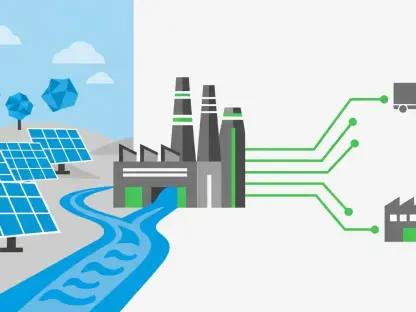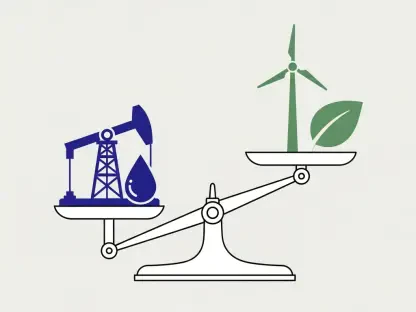The Biden administration’s outgoing allocation of hundreds of millions of dollars towards non-automotive transportation projects represents a significant shift in federal transportation policy. This flurry of funding aims to address the needs of pedestrians, cyclists, and sustainable transportation infrastructure through various federal programs such as the Reconnecting Communities Program, Rebuilding American Infrastructure With Sustainability and Equity (RAISE), and the Active Transportation Infrastructure Investment Program (ATIIP). These initiatives have emphasized reconnecting communities divided by past infrastructure decisions and fostering more equitable and sustainable modes of transportation. This extensive investment marks a pivotal moment where federal transportation policy shifts focus from traditional automobile-centric projects to those that enhance walkability, cycling, and overall urban livability.
The infusion of federal funds into these projects is more than just a financial commitment; it represents a growing recognition of the need to address the long-standing disparities in transportation infrastructure. Through targeted investments in pedestrian and cycling infrastructure, the administration aims to reduce traffic congestion, lower carbon emissions, and promote healthier lifestyles. Additionally, these projects aim to heal the scars left by past infrastructure decisions that often divided communities, particularly in urban areas, thus creating more cohesive and accessible environments for all residents. This policy pivot reflects a broader, more inclusive approach to transportation planning that underscores the importance of equity, sustainability, and community connectivity in building the cities of the future.
Reconnecting Communities Program: Addressing Historical Divides
One of the critical programs highlighted is the Reconnecting Communities Program, which focuses on addressing the divisive effects of past infrastructure projects. For instance, Rochester, N.Y. received $100 million for the Inner Loop Transformation project, aimed at removing a notorious downtown highway and reclaiming 22 acres for new development and green space. Similarly, Baltimore secured $85 million to cap a block of U.S. 40, removing several ramps and incorporating safety improvements at intersections. Cleveland received $69.2 million to mitigate historical transportation barriers that separate the city from Lake Erie, planning to build a pedestrian land bridge to reconnect the city with its waterfront.
These projects are designed to heal the scars left by previous infrastructure decisions that often divided communities, particularly in urban areas. By removing or modifying these barriers, cities can create more cohesive and accessible environments for all residents. The emphasis on green spaces and pedestrian-friendly areas also aligns with broader environmental goals. Additionally, these efforts aim to improve the quality of life in urban areas by addressing long-standing issues related to transportation equity and accessibility. The Reconnecting Communities Program exemplifies a commitment to righting historical wrongs and promoting more inclusive urban development practices.
The implications of these projects extend beyond mere physical changes to the landscape; they represent a shift in how cities approach urban planning and community development. By prioritizing projects that restore connectivity and promote sustainable transportation, the Biden administration is setting a precedent for future infrastructure investments. This focus on reconnecting communities and creating pedestrian-friendly environments reflects a broader vision for more livable and resilient cities. Moreover, the success of these initiatives could serve as a model for other cities facing similar challenges, demonstrating the value of investing in projects that prioritize people over cars and foster a sense of community and belonging.
RAISE Program: Promoting Sustainability and Equity
The RAISE program, another major recipient of funding, supports a range of projects aimed at improving transportation infrastructure with a focus on sustainability and equity. For example, the Port Authority of New York and New Jersey received $25 million to implement a protected bike corridor and road diet along a dangerous corridor. Tempe, Arizona, also received $25 million to build the Upstream Dam Bicycle and Pedestrian Bridge, enhancing connectivity across the Rio Salado River. Similarly, Milwaukee and Seattle each received $25 million for pedestrian and bicycle safety improvements and light rail station upgrades, respectively.
These projects represent a broader trend towards creating safer, more accessible transportation options for all users. By prioritizing non-automotive modes of transportation, the RAISE program aims to reduce traffic congestion, lower carbon emissions, and promote healthier lifestyles. The focus on equity ensures that underserved communities also benefit from these improvements, addressing long-standing disparities in transportation infrastructure. Additionally, the RAISE program’s emphasis on sustainability highlights the federal government’s commitment to addressing climate change through strategic investments in green transportation projects.
The funding allocated through the RAISE program underscores a commitment to fostering more inclusive and sustainable transportation networks. This approach is particularly important in addressing the needs of marginalized communities that have historically been underserved by transportation infrastructure. By investing in projects that promote non-automotive modes of transportation, the RAISE program seeks to create more equitable access to transportation options, thereby enhancing overall quality of life. The program’s focus on both sustainability and equity aligns with broader goals of reducing environmental impact, promoting social justice, and creating more resilient urban environments.
ATIIP: Dedicated to Active Transportation Infrastructure
ATIIP, a newer federal program, is dedicated entirely to active transportation infrastructure. Philadelphia secured the largest grant in the first ATIIP cycle with $13.7 million for the Schuylkill River Trail, closing a critical gap in the multi-use trail. Other notable grants include $10.5 million for Detroit’s Joe Louis Greenway project, which will connect 23 neighborhoods with protected paths, and $9.4 million for Nashville’s “East Nashville Spokes” project, linking underserved neighborhoods to downtown Nashville via dedicated bikeways and pedestrian pathways.
The ATIIP program’s exclusive focus on active transportation highlights the growing recognition of the importance of walking and cycling as viable modes of transportation. By investing in infrastructure that supports these activities, cities can encourage more residents to choose sustainable and healthy transportation options. These projects also contribute to the overall goal of creating more livable and connected urban environments. Furthermore, by addressing the specific needs of cyclists and pedestrians, the ATIIP program aims to create safer and more efficient transportation networks that benefit all users, including those who may not have access to a car.
The impact of the ATIIP program extends beyond the immediate benefits of new infrastructure; it represents a broader cultural shift towards valuing and prioritizing active transportation. This shift is essential for creating more resilient and adaptable cities that can better withstand future challenges, such as climate change and population growth. By fostering a culture that prioritizes walking and cycling, the ATIIP program is helping to build communities that are not only more environmentally sustainable but also more socially cohesive and economically vibrant. The success of these projects will likely inspire other cities to pursue similar initiatives, further promoting the benefits of active transportation on a national scale.
Addressing Transportation Inequities and Promoting Sustainability
The overarching trend in these funding announcements is a concerted effort to address historical transportation inequities, create more sustainable and accessible transportation networks, and promote non-automotive modes of travel. This shift in focus towards sustainable transportation aligns with broader environmental and urban planning goals, emphasizing the need to reduce reliance on automobiles, decrease carbon emissions, and create more livable urban environments. However, there is a palpable concern among advocates about the continuity of these programs under the next administration. The Trump administration’s previous tenure showed a marked preference for funding rural highway projects, raising questions about whether similar programs will continue to receive support.
The reauthorization of the country’s core transportation programs in September 2026 will be a critical juncture in determining the future of these initiatives. The decisions made during this period will significantly impact the trajectory of transportation policy in the United States. Advocates for sustainable and equitable transportation are urging continued support for programs like Reconnecting Communities, RAISE, and ATIIP, emphasizing their importance in addressing environmental challenges and promoting social equity. The potential shift in focus under a new administration raises questions about the long-term sustainability of these initiatives, highlighting the need for ongoing advocacy and public support to ensure their continuation.
The emphasis on addressing transportation inequities and promoting sustainability reflects a broader recognition of the interconnectedness of these issues. By prioritizing investments in non-automotive transportation infrastructure, the Biden administration is taking steps to create more equitable and resilient urban environments. These efforts are crucial in addressing the systemic issues that have historically marginalized certain communities and contributed to environmental degradation. The success of these initiatives will depend on continued support and collaboration between federal, state, and local governments, as well as active engagement from the public and advocacy groups.
The Role of Transportation Secretary Pete Buttigieg
The Biden administration’s recent allocation of hundreds of millions of dollars toward non-automotive transportation projects signifies a notable change in federal transportation policy. These funds aim to support pedestrians, cyclists, and sustainable transportation infrastructure through various federal programs like the Reconnecting Communities Program, Rebuilding American Infrastructure With Sustainability and Equity (RAISE), and the Active Transportation Infrastructure Investment Program (ATIIP). These initiatives focus on reconnecting communities divided by previous infrastructure decisions and promoting equitable and sustainable transportation modes. This considerable investment highlights a pivotal shift from traditional automobile-centric projects to those that improve walkability, cycling, and overall urban livability.
This injection of federal funds is more than a fiscal commitment; it reflects growing awareness of the necessity to address long-standing inequities in transportation infrastructure. By investing in pedestrian and cycling infrastructure, the administration aims to reduce traffic congestion, cut carbon emissions, and encourage healthier lifestyles. These projects also seek to mend the divisions caused by past infrastructure decisions that frequently fragmented communities, especially in urban areas. By doing so, they aim to create more cohesive and accessible environments for all residents. This policy shift embodies a broader, more inclusive approach to transportation planning, emphasizing equity, sustainability, and community connectivity. It demonstrates a forward-thinking vision for building more livable and connected cities for the future.









